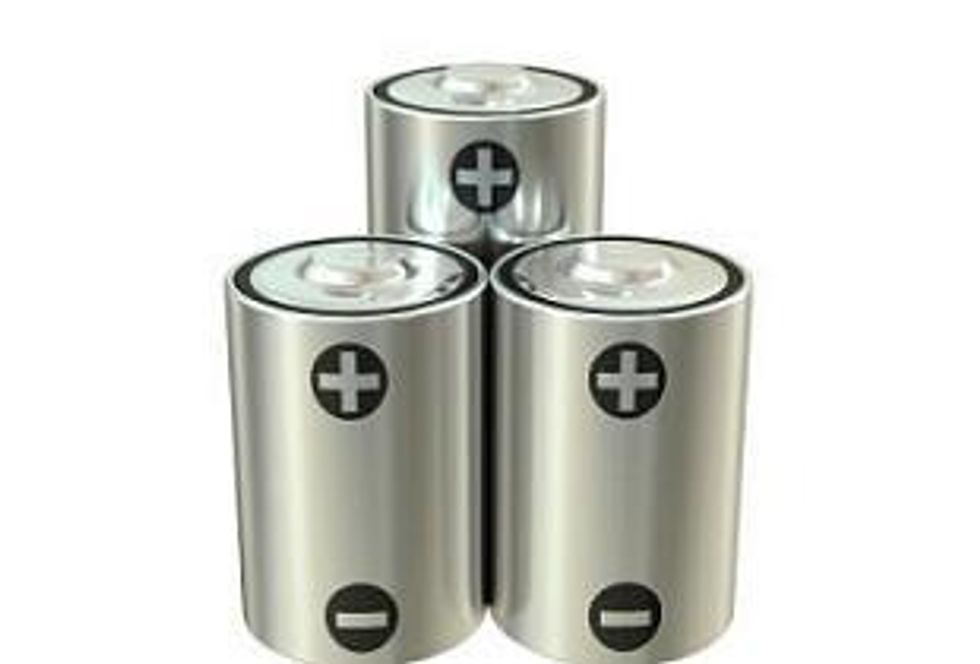Advancements in Vanadium Redox Battery Could Improve Economic Viability
American Vanadium’s Paul Casey discusses a new electrolyte mix has been found to increase the energy capacity of vanadium redox batteries (VRBs) by as much as 70 percent. The new technology could prove the economic potential of Vanadium Redox Batteries if utilized for integrating solar and wind power into the grid.
A new electrolyte mix has been found to increase the energy capacity of vanadium redox batteries (VRB) by as much as 70 percent, opening up more economic potential for utilizing this technology for integrating solar and wind power into the grid.
“This helps it make more economic sense – it reduces some of the costs and gives it a wider range of applications, but it’s not necessarily a real game-changer in a technology,” said Paul Casey, Director of Business Development at American Vanadium (TSXV:AVC), a metals exploration company with a vanadium project in Nevada that is expected to start production by late 2012. “I think the technology is good enough to be used in grid-scale applications even without that new improvement.”
Researchers at the Department of Energy’s Pacific Northwest National Laboratory (PNNL) found that adding hydrochloric acid to the sulfuric acid typically used in VRBs not only increased the batteries’ energy storage capacity, but also expanded the temperature range in which they operate.
The main advantages of VRBs are that it can offer almost unlimited capacity simply by using larger storage tanks, it can be left completely discharged for long periods with no ill effects, it can be recharged simply by replacing the electrolyte if no power source is available to charge it, and if the electrolytes are accidentally mixed the battery suffers no permanent damage.
“This improvement helps improve the electrolyte, which is a big driver of the cost of the batteries and would help make them more compact,” said Casey. “It hasn’t really caught on yet, but there have been installations around the world of different sizes but it hasn’t yet cracked the big megawatt barrier in terms of regular implementation.”
One of the most attractive applications of an effective large-scale storage battery is that unlike most traditional forms of electric generating technologies, both wind and solar, are not consistent in their power production, creating a need for the kind of storage capacity that VRB are able to provide. VRBs also have potential to help energy producers deal with peak demand by storing electricity in order to reduce infrastructure costs and development.
In the past, one drawback has been that sulfuric acid-based vanadium batteries only work between about 50 and 104 degrees Fahrenheit (10 to 40 Celsius). Below that temperature range, the ion-infused sulfuric acid crystallizes. The battery could also over-heat, which causes an unwanted solid to form and renders the battery useless. To regulate the temperature, air conditioners or circulating cooling water were used, which causes up to 20 percent energy loss and significantly increasing the battery’s operating cost. By adding the correct mix of sulfur, researchers found the new mixture allowed the battery to work in both warmer and colder temperatures, between 23 and 122 degrees Fahrenheit (-5 to 50 Celsius), greatly reducing the need for costly cooling systems.
“Vanadium redox batteries have been around for more than 20 years, but their use has been limited by a relatively narrow temperature range,” said lead author and PNNL chemist Liyu Li in an article with R&D Magazine. “Something as simple as adjusting the batteries’ electrolyte means they can be used in more places without having to divert power output to regulate heat.”
At the moment, researchers continue to work towards an assembly that is ready for widespread adoption. Having VRBs come closer to a practical implementation for use on the grid means that there could be a rise in demand for the mineral.
“I think if and when VRB technologies catch on it’s going to create a huge demand for vanadium and for us, one of the things the VRB manufacturers are looking for is stability in pricing,” said Casey. “This gives us the opportunity to enter into longer term contracts with stable pricing which obviously protects the end user but also protects us because it gives us a guaranteed margin.”
Casey says that at the current stage in their feasibility report, American Vanadium plans to primarily focus on producing vanadium without downstream applications, though they are exploring opportunities for vertical integration or downstream applications like vanadium pentoxide, which most of the industry works back into an electrolyte to be used in VRBs.
It may be too early to know if this upgrade in VRBs will work as effectively as hoped for once the testing leaves the laboratory and enters the field. There is a possibility that the lab quantities will not scale as well to large settings like a power grid. But if it does, it could mean a big change in the cost and capacity of flow batteries, which have great potential for further adoption of sustainable technologies increasing their presence in providing wide-reaching energy needs.


